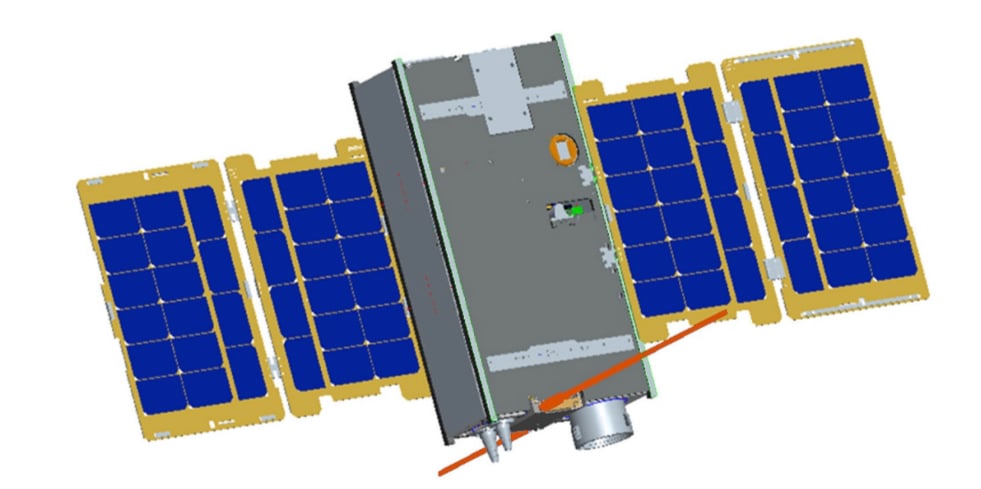The AMSAT News Service bulletins are a free, weekly news and information service of AMSAT, The Radio Amateur Satellite Corporation. ANS publishes news related to Amateur Radio in Space including reports on the activities of a worldwide group of Amateur Radio operators who share an active interest in designing, building, launching and communicating through analog and digital Amateur Radio satellites.
The news feed on http://www.amsat.org publishes news of Amateur Radio in Space as soon as our volunteers can post it.
Please send any amateur satellite news or reports to: ans-editor [at] amsat.org
You can sign up for free e-mail delivery of the AMSAT News Service Bulletins via the ANS List; to join this list see: https://mailman.amsat.org/postorius/lists/ans.amsat.org/
In this edition:
- CAS-5A and CAS-10 User Manuals Available
- US Schools Selected for ISS Contacts in 2023
- SSTV Unit on ISS is Inoperable
- Bill to Eliminate Private Land Use Restrictions on Amateur Radio Introduced
- 768 teams enter The Astro Pi Mission Space Lab 2022/23
- AMSAT 2022 President’s Club Closes Out This Week
- Changes to AMSAT-NA TLE Distribution for December 23
- ARISS News
- Upcoming Satellite Operations
- Hamfests, Conventions, Maker Faires, and Other Events
- Satellite Shorts From All Over
ANS-359 AMSAT News Service Weekly Bulletins
To: All RADIO AMATEURS
From: Radio Amateur Satellite Corporation
712 H Street NE, Suite 1653
Washington, DC 20002
DATE 2022 DEC 25
CAS-5A and CAS-10 User Manuals Available
OSCAR-118 (CAS-5A) was launched on December 9, 2022. It adopts a 6U CubeSat structure with six sides body-mounted solar panels. A three-axis stabilized attitude control system is used. Long-term power consumption is about 10 Watts.
– CW telemetry beacon: 435.570 MHz @ 22wpm
– GMSK telemetry: 435.650 MHz @ 4800/9600bps
– V/U mode linear transponder: Uplink = 145.820 MHz; Downlink = 435.540 MHz; Bandwidth = 30kHz; Spectrum = Inverted
– V/U mode FM transponder: Uplink = 145.925 MHz; Downlink = 435.600 MHz; Bandwidth = 16kHz
– H/U mode linear transponder: Uplink = 21.435 MHz; Downlink= 435.505 MHz; Bandwidth = 15kHz: Spectrum = Normal
The user manual, written by Alan Kung, BA1DU, is available for download at https://tinyurl.com/ANS-359-0-118-Manuak
On December 18, 2022, CAMSAT’s satellite XW-4 (CAS-10) was deployed from the Tianzhou-5 cargo ship that was docked to the Tiangong space station. CAS-10 carries a linear Amateur Radio transponder. CAS-10 satellite adopts a 8U CubeSat structure with four solar array panels. A three-axis stabilized attitude control system is used. Long-term power consumption is about 18.3 Watts.
Specification for the onboard radio systems are:
– CW Telemetry Beacon: 435.575 MHz @ 22wpm
– GMSK Telemetry 435.275 MHz @ 4800 bps
– V/U mode linear transponder: Uplink frequency: 145.870 MHz/Downlink frequency: 435.180 MHz, 30 KHz Spectrum inverted
The user manual, also written by Alan Kung, BA1DU, is available for download at https://tinyurl.com/ANS-359-CAS-10-Manual.
[ANS thanks AMSAT-UK for the above information.]
+=+=+=+=+=+=+=+=+=+=+=+=+=+=+=+=+=+=+=+=+=+=+=+=+=+=+=+=+=+=+=+=+=+=+
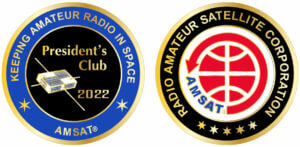
Only One Week Left for the 2022 AMSAT President’s Club!
To commemorate the 50th anniversary of its launch on
October 15, 1972, the 2022 coin features
an image of AMSAT-OSCAR 6.
Join the 2022 AMSAT President’s Club today and help
Keep Amateur Radio in Space!
https://www.amsat.org/join-the-amsat-presidents-club/
+=+=+=+=+=+=+=+=+=+=+=+=+=+=+=+=+=+=+=+=+=+=+=+=+=+=+=+=+=+=+=+=+=+=+
U.S. Schools Selected for ISS Contacts in 2023
Amateur Radio on the International Space Station (ARISS) has announced a list of seven schools/host organizations selected to host scheduled Amateur Radio contacts with the astronaut crew on the International Space Station (ISS) from July to December 2023.
Earlier this year, nine schools and organizations were selected for contacts that will take place from January to June 2023 with the ISS.
The primary goal of the ARISS program is to engage young people in science, technology, engineering, arts, and math (STEAM) activities that raise their awareness of space communications, radio communications, space exploration, and related areas of study and career possibilities. ARISS does this by organizing scheduled contacts via amateur radio between crew members aboard the ISS and students. Before and during these radio contacts, students, educators, parents, and communities take part in hands-on learning activities tied to space, space technologies, and Amateur Radio.
ARISS anticipates that NASA will be able to provide scheduling opportunities for these host organizations in the U.S. between July – December 2023:
– A.L. Burruss Elementary School, Marietta, GA
– Augusta Preparatory Day School, Augusta, GA
– Bowman Middle School, Bakersville, NC
– Camp William B. Snyder, Haymarket, VA
– Covenant Christian Academy, West Peabody, MA
– Orangeburg Christian Academy, Orangeburg, SC
– Webb Bridge Middle School, Alpharetta, GA
The 16 schools and organizations selected for 2023 are now working to complete an acceptable plan that demonstrates their ability to execute a ham radio contact with the ISS. Once their equipment plan is approved by the ARISS Technical Mentors, the final selected schools/organizations will be scheduled as their availability and flexibility match up with the scheduling opportunities offered by NASA.
[ANS thanks the ARRL for the above information.]
SSTV Unit on ISS is Inoperable
The ARISS SSTV capability is currently not operational. The SSTV card that interfaces with the ISS computer was damaged and cannot be reliably used. Also, ISS has recently switched to a new complement of laptops, which requires the ARISS Russia team to develop a new computer interface to support SSTV. ARISS Russia has been actively working this new development and is consulting with the ARISS International hardware/software team on these efforts. Sergey Samburov, RV3DR, ARISS Russia leader, has stated that they expect to complete the SSTV development effort early next year and launch the hardware on a future Progress flight later in the year. Until then, SSTV operations will be down.
The ARISS International team will keep all informed about SSTV status through its web site http://www.ariss.org and its social media outlets.
[ANS thanks ARISS for the above information.]
Bill to Eliminate Private Land Use Restrictions on Amateur Radio Introduced
Congressman Bill Johnson (OH-6) introduced a bill in the U.S. House of Representatives (H.R.9670) on Thursday, December 22, 2022, to eliminate private land use restrictions that prohibit, restrict, or impair the ability of an Amateur Radio Operator from operating and installing amateur station antennas on property subject to the control of the Amateur Radio Operator.
The exponential growth of communities subject to private land use restrictions that prohibit both the operation of Amateur Radio and the installation of amateur station antennas has significantly restricted the growth of the Amateur Radio Service. These restrictions are pervasive in private common interest residential communities such as single-family subdivisions, condominiums, cooperatives, gated communities, master-planned communities, planned unit developments, and communities governed by community associations. The restrictions have particularly impacted the ability of Amateur Radio to fulfill its statutorily mandated duty of serving as a voluntary noncommercial emergency communications service.
Congress in 1996 directed the Federal Communications Commission (FCC) to promulgate regulations (Public Law 104-104, title II, section 207, 110 Stat. 114; 47 U.S.C. 303 note) that have preempted all private land use restrictions applicable to exterior communications facilities that impair the ability of citizens to receive television broadcast signals, direct broadcast satellite services, or multichannel multipoint distribution services, or to transmit and receive wireless internet services. ARRL attempts to obtain similar relief for Amateur Radio were rejected by the FCC with a statement such relief would have to come from Congress.
ARRL Legislative Advocacy Committee Chairman John Robert Stratton, N5AUS, noted that Congress, in 1994 by Joint Resolution, S.J.Res.90/H.J.Res.199, declared that regulations at all levels of government should facilitate and encourage the effective operation of Amateur Radio from residences as a public benefit. He continued by stating that “H.R.9670, the Amateur Radio Emergency Preparedness Act, is intended to fulfill that mandate and preserve the ability of Amateur Radio Operators to continue to serve as a key component of American critical communications infrastructure.”
Read more at http://www.arrl.org/member-bulletin?issue=2022-12-23.
[ANS thanks the ARRL for the above information.]
768 Teams Enter The Astro Pi Mission Space Lab 2022/23
This year, 768 teams made up of 3086 young people from 23 countries sent Raspberry Pi their ideas for experiments to run on board the International Space Station (ISS) for Astro Pi Mission Space Lab.
Mission Space Lab is part of the European Astro Pi Challenge, an ESA Education programme run in collaboration with us at the Raspberry Pi Foundation. Mission Space Lab teams can choose between ‘Life on Earth’ and ‘Life in space’ for their experiment idea.
A panel of 25 judges from the Raspberry Pi Foundation and ESA Education assessed the submitted ideas. They were restricted in how many teams could be accommodated, as time to run experiments on board the ISS is limited, especially for ‘Life on Earth’ experiments which need time in a nadir window. The standard of the submitted ideas was higher than ever, making this the toughest judging yet. The judges were delighted are delighted to announce that 486 teams will move on to Phase 2 of Mission Space Lab: writing the code for their experiments.
All the teams whose experiment ideas were selected will receive a special Astro Pi hardware kit, customised to their idea, to help them write and test the Python programs to execute their experiments. Once the teams of young people have received their kits, they can familiarise themselves with the Astro Pi hardware and then create and test (and re-test!) their programs.
[ANS thanks RaspberryPi.org for the above information.]
+=+=+=+=+=+=+=+=+=+=+=+=+=+=+=+=+=+=+=+=+=+=+=+=+=+=+=+=+=+=+=+=+=+
Need new satellite antennas? Purchase Arrows, Alaskan Arrows,
and M2 LEO-Packs from the AMSAT Store. When you purchase through
AMSAT, a portion of the proceeds goes towards
Keeping Amateur Radio in Space.
https://amsat.org/product-category/hardware/
+=+=+=+=+=+=+=+=+=+=+=+=+=+=+=+=+=+=+=+=+=+=+=+=+=+=+=+=+=+=+=+=+=+
AMSAT 2022 President’s Club Closes Out This Week
Only one week remains for AMSAT enthusiasts to join the 2022 AMSAT President’s Club. Only a limited number of coins are minted each year and when they’re gone, they’re gone. Each coin has four-color inlays and finished to a bright gold finish. The 2022 coin features an image of AMSAT-OSCAR 6. The 2021 coin featured AO-7 and the 2023 coin will feature AO-10. Members also receive a full-color certificate and iron-on AMSAT logo patches.
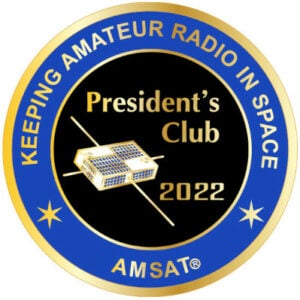
So far in 2022, AMSAT 2022 President Club members have donated $51,523 to Help Keep Amateur Radio in Space and there is still one week to go! You can choose your level of membership and still make a donation at https://www.amsat.org/product-category/amsat-presidents-club-donations/.
[ANS thanks Frank Karnauskas, N1UW, VP, Development for the above information.]
+=+=+=+=+=+=+=+=+=+=+=+=+=+=+=+=+=+=+=+=+=+=+=+=+=+=+=+=+=+=+=+=+=+
Want to fly the colors on your own grid expedition?
Get your AMSAT car flag and other neat stuff
from our Zazzle store!
25% of the purchase price of each product goes
towards Keeping Amateur Radio in Space
https://www.zazzle.com/amsat_gear
+=+=+=+=+=+=+=+=+=+=+=+=+=+=+=+=+=+=+=+=+=+=+=+=+=+=+=+=+=+=+=+=+=+
Changes to AMSAT-NA TLE Distribution for December 23, 2022
Two Line Elements or TLEs, often referred to as Keplerian elements or keps in the amateur community, are the inputs to the SGP4 standard mathematical model of spacecraft orbits used by most amateur tracking programs. Weekly updates are completely adequate for most amateur satellites. TLE bulletin files are updated Thursday evenings around 2300 UTC, or more frequently if new high interest satellites are launched. More information may be found at https://www.amsat.org/keplerian-elements-resources/
The following satellite has been added to this week’s AMSAT TLE Distribution:
CAS-10 NORAD Cat ID 54816
[ANS thanks Joe Fitzgerald, KM1P, AMSAT IT Team, for the above information.]
ARISS NEWS
Amateurs and others around the world may listen in on contacts between amateurs operating in schools and allowing students to interact with astronauts and cosmonauts aboard the International Space Station. The downlink frequency on which to listen is 145.800 MHz worldwide.
No school contracts are currently reported.
The latest information on the operation mode can be found at https://www.ariss.org/current-status-of-iss-stations.html
The latest list of frequencies in use can be found at https://www.ariss.org/contact-the-iss.html
[ANS thanks Charlie Sufana, AJ9N, one of the ARISS operation team mentors for the above information.]
+=+=+=+=+=+=+=+=+=+=+=+=+=+=+=+=+=+=+=+=+=+=+=+=+=+=+=+=+=+=+=+=+=+
AMSAT, along with our ARISS partners, is developing an Amateur
Radio package, including two-way communication capability, to
be carried on-board Gateway in lunar orbit.
Support AMSAT’s projects today at https://www.amsat.org/donate/
+=+=+=+=+=+=+=+=+=+=+=+=+=+=+=+=+=+=+=+=+=+=+=+=+=+=+=+=+=+=+=+=+=+
Upcoming Satellite Operations
KB3IAI: Will be roving in EM23 (near Paris, TX) from Dec 21 to Dec 27, 2022. Passes will be added to hams.at, & Twitter. Linear and FM as availability with family permits.
[ANS thanks Paul Overn, KE0PBR, AMSAT rover page manager, for the above information.]
Hamfests, Conventions, Maker Faires, and Other Events
AMSAT Ambassadors provide presentations, demonstrate communicating through amateur satellites, and host information tables at club meetings, hamfests, conventions, maker faires, and other events.
AMSAT Ambassadors provide presentations, demonstrate communicating through amateur satellites, and host information tables at club meetings, hamfests, conventions, maker faires, and other events.
AMSAT Ambassador Clint Bradford K6LCS has a few satellite presentations scheduled …
-Greenville, North Carolina (1/10/23)
-Ontario, Canada (1/16/23)
-Thames Valley, England (5/11/23)
Think a 90-minute lively, informative, and fun “How to Work the Easy Satellites” Zoom presentation would be appropriate for your convention or club? Always included are overviews of the ARRL, AMSAT, and ARISS. And pre-presentation questions are welcome. Visit http://www.work-sat.com for more information.
Satellite Shorts From All Over
+ NASA has a long history of hiding secret messages in its spacecraft and that tradition continued with the launch of the Orion crew capsule in November on top of the Artemis I rocket. Five hidden messages were placed in the Orion capsule ranging from Morse Code to musical notes. In the middle of the capsule, above the cockpit control console, was a Morse Code message that spelled out the name “Charlie” in remembrance of former Orion Deputy Program Manager Charlie Lundquist, who died in 2020. [ANS thanks ARRL for the above information.]
+ In still more legislative news, Congresswoman Debbie Lesko (AZ-08) introduced a bill in the U.S. House of Representatives (H.R. 9664) on December 21, 2022, to require that the Federal Communications Commission (FCC) replace the current HF digital symbol rate limit with a 2.8 kHz bandwidth limit. [ANS thanks ARRL Letter for the above information.]
+ Possibly due to a micrometeoroid or debris strike, the Soyuz MS-22 capsule docked to the ISS has suffered an external radiator coolant leak. If it is determined to be unsafe for a crewed return trip, cosmonauts Sergey Prokopyev and Dimitri Petelin along with NASA astronaut Frank Rubio would be effectively trapped until a replacement could be launched. That replacement, the Soyuz MS-23 capsule, is apparently being accelerated for a potential uncrewed launch and would be remotely piloted to the ISS. This is possibly the most significant “emergency” situation in the 20+ year history of the ISS. [ANS thanks The Orbital Index for the above information.]
+ Another roll-out solar array was installed and deployed by astronauts Frank Rubio and Josh Cassada outside the International Space Station on a spacewalk Thursday, Dec. 22, a day later than previously planned after the space station needed to dodge a piece of space junk. The original solar panels launched on four space shuttle missions from 2000 to 2009. As expected, the efficiency of the station’s original solar arrays has degraded over time. NASA is upgrading the space station’s power system with the new roll-out solar arrays – at a cost of $103 million – which will partially cover six of the station’s eight original solar panels. [ANS thanks SpaceflightNow for the above information.]
Join AMSAT today at https://launch.amsat.org/
In addition to regular membership, AMSAT offers membership to:
* Societies (a recognized group, clubs or organization).
* Primary and secondary school students are eligible for membership at one-half the standard yearly rate.
* Post-secondary school students enrolled in at least half time status shall be eligible for the student rate for a maximum of 6 post-secondary years in this status.
* Memberships are available for annual and lifetime terms.
Contact info [at] amsat.org for additional membership information.
73 and remember to help Keep Amateur Radio in Space!
This week’s ANS Editor, Frank Karnauskas, N1UW
n1uw at amsat dot org
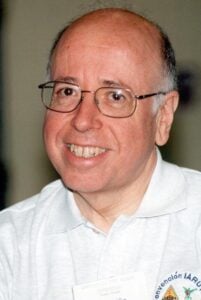



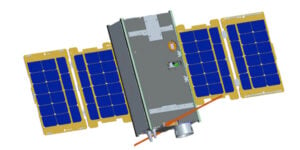 XW-4(CAS-10) satellite adopts a 8U CubeSat structure with a mass of about 12kg, an on-orbit envelope size of 1007x790x475mm with four solar array panels and a three-axis stabilized attitude control system is used, long-term power consumption is about 18.3 Watts.
XW-4(CAS-10) satellite adopts a 8U CubeSat structure with a mass of about 12kg, an on-orbit envelope size of 1007x790x475mm with four solar array panels and a three-axis stabilized attitude control system is used, long-term power consumption is about 18.3 Watts.